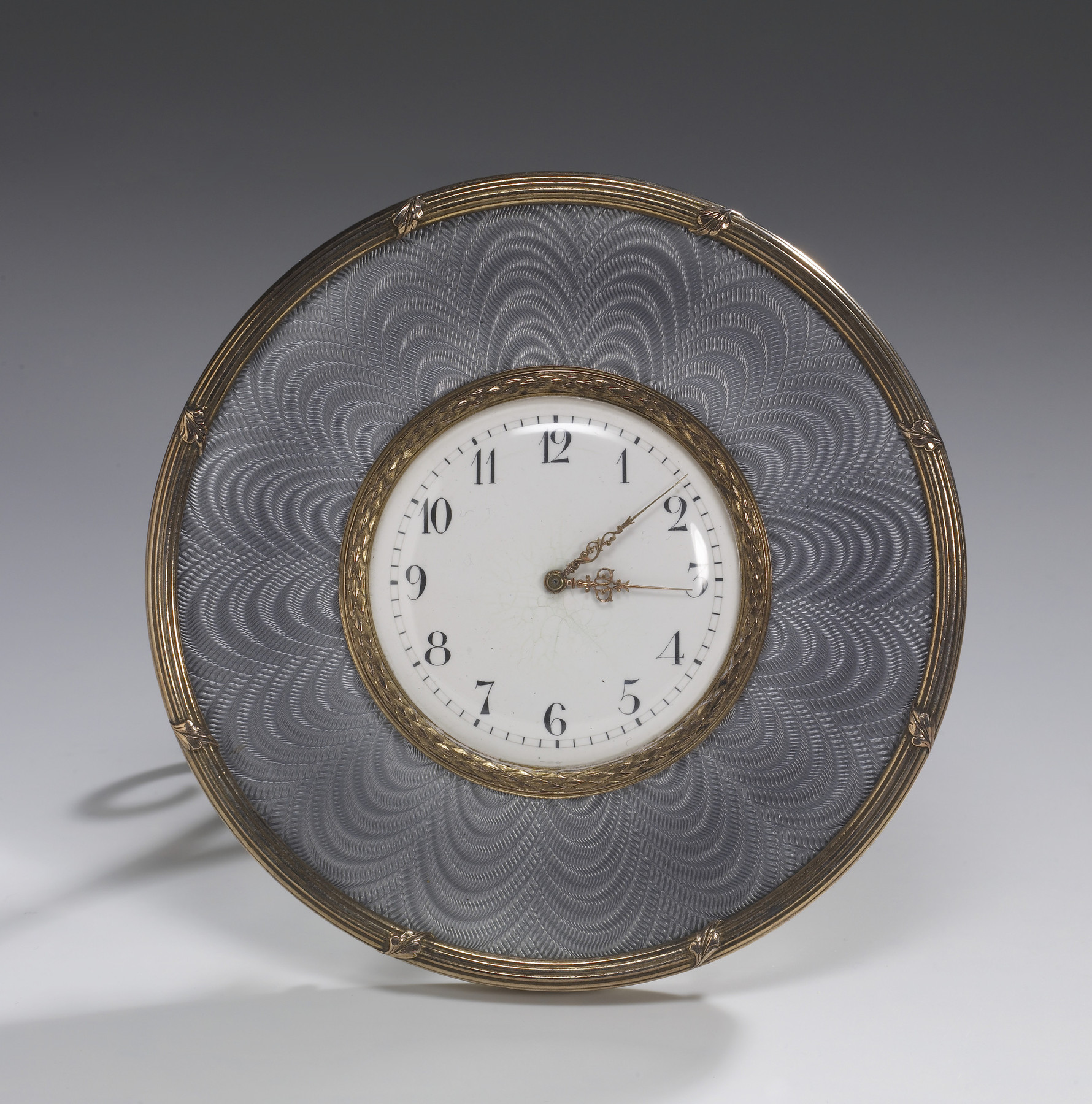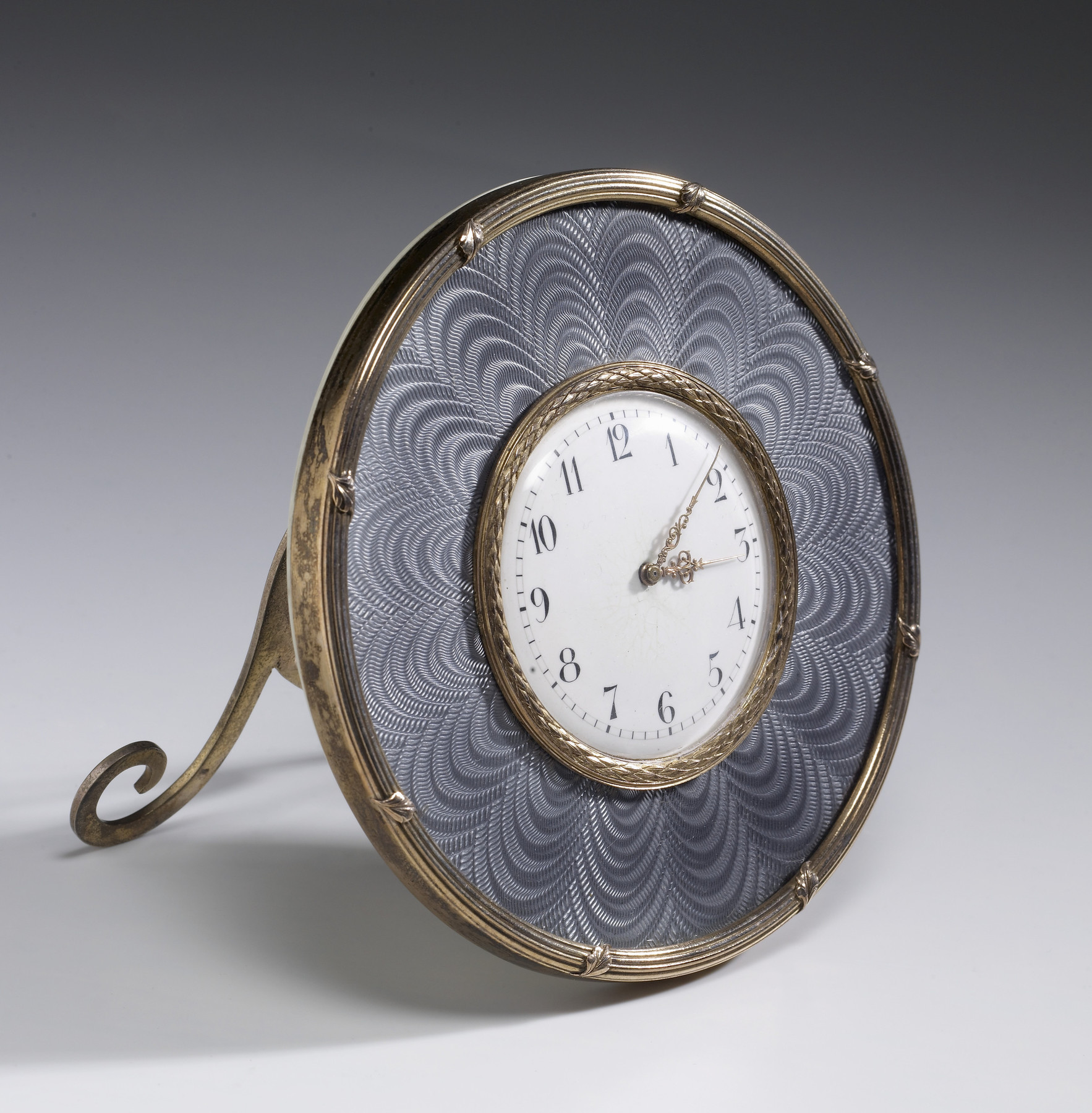Clock
(18th and 19th Centuries )
Atypically for Perkhin, this elegant clock is in the neoclassical rather than the rococo style usually associated with his works. The face of the clock is en plein enameled in a subtle grayish blue color over a guilloché background, which has been mechanically engraved in a wavy, moiré-like pattern. Neoclassical reeding and laurel leaf designs adorn the clock's rim and the white dial.
The clock has a seven-day movement which is marked Heg. Zab.
Inscription
Provenance
Provenance (from the French provenir, 'to come from/forth') is the chronology of the ownership, custody, or location of a historical object. Learn more about provenance at the Walters.
Sale No. 5258, Sotheby's, New York, December 13, 1984, Lot 473; purchased by Jean M. Riddell (with Leo Kaplan as agent), Washington, D.C., January 2, 1985; by bequest to Walters Art Museum, 2010.
Exhibitions
| 2017-2018 | Fabergé and the Russian Crafts Tradition: An Empire's Legacy . The Walters Art Museum, Baltimore. |
Conservation
| Date | Description | Narrative |
|---|---|---|
| 11/16/2017 | Treatment | cleaned |
| 11/16/2017 | Treatment | Cleaned for exhbition. |
Geographies
Russia, Saint Petersburg (Place of Origin)
Measurements
Diam: 4 1/4 in. (10.8 cm)
Credit Line
Bequest of Mrs. Jean M. Riddell, 2010
Location in Museum
Not on view
Accession Number
In libraries, galleries, museums, and archives, an accession number is a unique identifier assigned to each object in the collection.
In libraries, galleries, museums, and archives, an accession number is a unique identifier assigned to each object in the collection.
58.524




